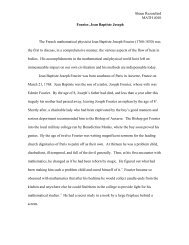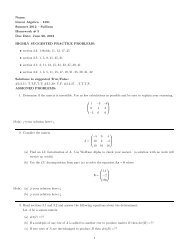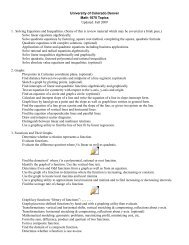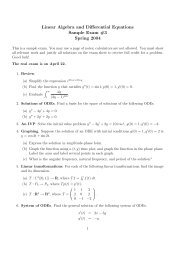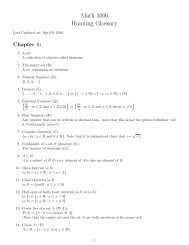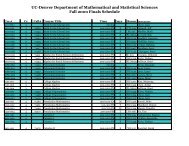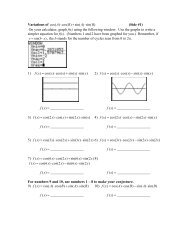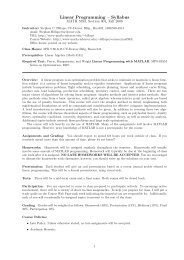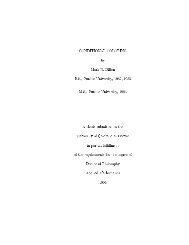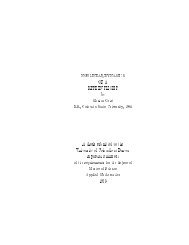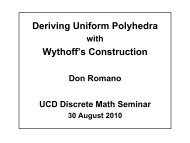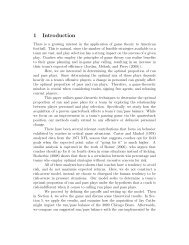The Role of Software in Optimization and Operations Research
The Role of Software in Optimization and Operations Research
The Role of Software in Optimization and Operations Research
Create successful ePaper yourself
Turn your PDF publications into a flip-book with our unique Google optimized e-Paper software.
OPTIMIZATION AND OPERATIONS RESEARCH – <strong>The</strong> <strong>Role</strong> <strong>of</strong> S<strong>of</strong>tware <strong>in</strong> <strong>Optimization</strong> <strong>and</strong> <strong>Operations</strong> <strong>Research</strong> - Harvey J.<br />
Greenberg<br />
<strong>The</strong>re are 12 nonzero entries <strong>in</strong> this 5 × 6 matrix, so its density is 12<br />
30 , which is 0.4. For<br />
more realistic sizes, where m 1000 , the density is less than 1%. Many large LPs have<br />
an embedded network structure, which is one reason they tend to be very sparse.<br />
Nonl<strong>in</strong>ear functions are represented by their parse tree, or someth<strong>in</strong>g very similar.<br />
Figure 2 shows an example.<br />
Figure 2: Parse Tree for<br />
2 3<br />
1 2 = 1 − 1 2 + 2<br />
f ( x ; x ) x x x x<br />
Solvers call upon this tree for function evaluation. Modern methods use automatic<br />
differentiation, which stores nonl<strong>in</strong>ear functions <strong>in</strong> a similar data structure, designed for<br />
rapid calculations <strong>of</strong> the function <strong>and</strong> its derivatives (if they exist).<br />
3.2. Parallel Algorithms<br />
One <strong>of</strong> the current topics <strong>of</strong> research is how to design parallel algorithms. An early use<br />
<strong>of</strong> parallel architecture was for Dantzig-Wolfe decomposition <strong>in</strong> LP. Many types <strong>of</strong><br />
architectures <strong>and</strong> algorithms are <strong>in</strong> the text by Bertsekas <strong>and</strong> Tsitsiklis, <strong>and</strong> more recent<br />
ideas are <strong>in</strong> proceed<strong>in</strong>gs, notably those edited by Heath, et al. <strong>and</strong> by Pardalos, et al.<br />
To illustrate how a parallel architecture can be used effectively, consider a<br />
parallelization <strong>of</strong> the conjugate gradient method (see Nonl<strong>in</strong>ear Programm<strong>in</strong>g). We are<br />
given a quadratic form, 1 T<br />
x Qx − cx , where Q is an n × n symmetric, positive-def<strong>in</strong>ite<br />
2<br />
matrix. We know its (unique) m<strong>in</strong>imum occurs at the solution to the equation, Qx = c,<br />
<strong>and</strong> one way to compute this is by the follow<strong>in</strong>g iterations:<br />
t+ 1 t t t<br />
x = x + α d ,<br />
(3)<br />
where x 0 is given, d 0 = − g 0 = c − Qx 0 , <strong>and</strong><br />
t t<br />
t gd<br />
α =− (4)<br />
t T t<br />
( d ) Qd<br />
©Encyclopedia <strong>of</strong> Life Support Systems (EOLSS)




